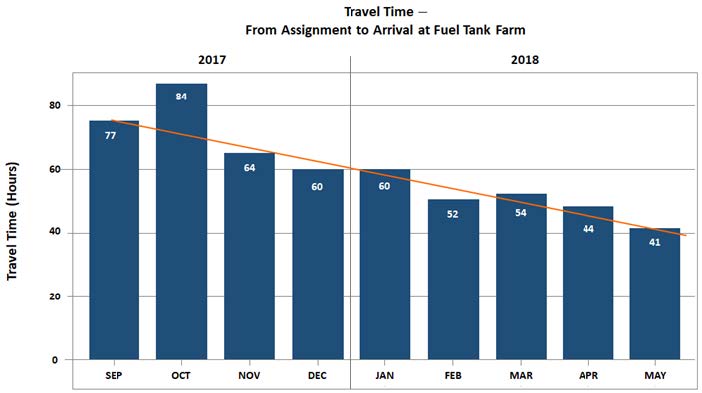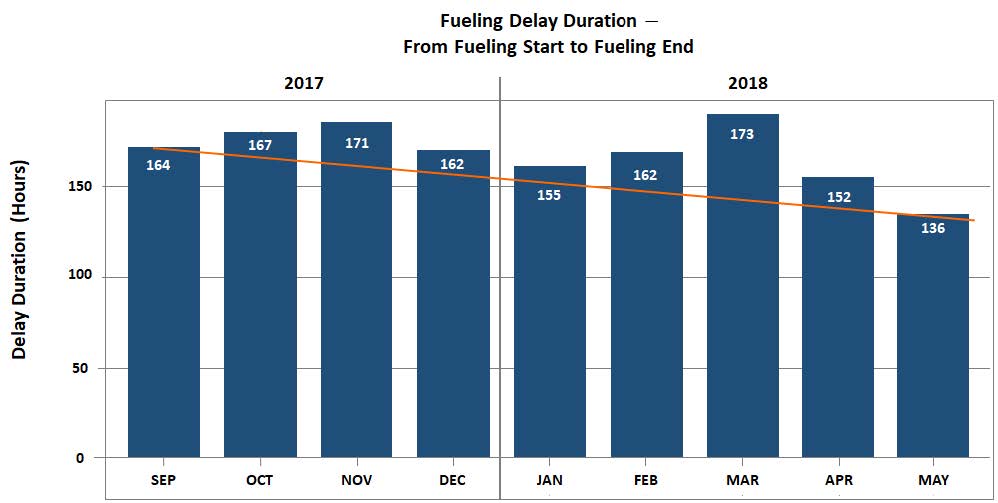Modular Mining’s Performance Assurance team helps an Australian coal operation increase truck availability through automated fueling assignments
In September 2017, Modular Mining’s Performance Assurance (PA) team consulted with personnel at an open-cut operation in the South West of Western Australia. During the engagement, the mine requested assistance in identifying opportunities to increase both truck availability and production at minimal cost to the site.
LOCATION
Australia
GOAL
Increase truck availability
RESULTS
Gain of approximately 28 truck-hours

Problem
After reviewing a number of options, the PA team recommended that the mine focus on automating its refueling process by leveraging underutilized capabilities of its DISPATCH Fleet Management System (FMS). With the mine’s approval, the PA team began working to understand and evaluate the operation’s fueling-related practices.
Through analysis, observation, and discussion, the PA team identified that 95% of the mine’s fueling assignments were manually initiated by dispatchers when fuel levels dropped below 40%. In contrast, the 5% of DISPATCH FMS-initiated fueling assignments occurred at fuel levels between 30 and 27%; a site-configured threshold that resulted in fewer unproductive trips to and from the fuel bay.
Resolution
Modular Mining returned to the mine in October and worked with dispatch personnel to enhance fueling optimization at the site. Together, they fine-tuned the DISPATCH system configuration and developed training and process documents for the management of fueling assignments.
The PA team and mine supervisors then met with the dispatchers and operators to convey how the new fueling process would reduce the time trucks spent in the fuel bay, resulting in increased truck availability, production, and overall profits.
With the help of the PA team, the dispatchers and operators gained an understanding of not only what the new process would consist of, but also how implementing it would benefit operations.
As a result, the dispatchers and operators were more likely to accept and adopt the new practices with less resistance to change.
In the initial phase of the plan, the PA team configured the DISPATCH FMS to optimize fuel assignments when fuel reserves reached 30%. If fuel levels continued to drop, the FMS would then assign a truck when fuel levels dropped to the CRITICAL mark at 27% remaining. Five months later, the PA team expanded the fueling configuration to include custom parameters that would enable refueling assignments for specific trucks to occur between 24% and 19% or 25% and 20%, depending on truck type.
Results
Between September 2017 and May 2018, the PA team identified a reduction in non-productive travel time (time from receiving assignment to arrival at fuel bay) and fuel delay time (time from arriving to departing at the fuel farm). Across the fleet, non-productive travel time dropped from 80 hours to 42 hours, for a gain of approximately 38 truck-hours (Figure 1).
Despite a slight spike in March (resulting from a truck running out of fuel because of a broken sensor), overall fuel delay time between September 2017 and May 2018 was reduced from 164 hours to 136 hours a gain of approximately 28 truck-hours (Figure 2).


Figure 1. Reduction in travel time
Figure 2. Reduction in fueling delay duration

